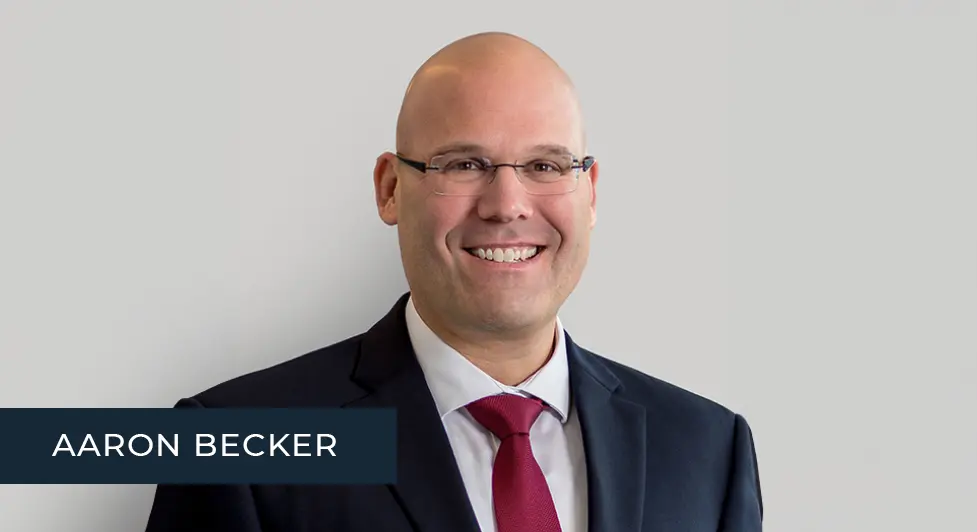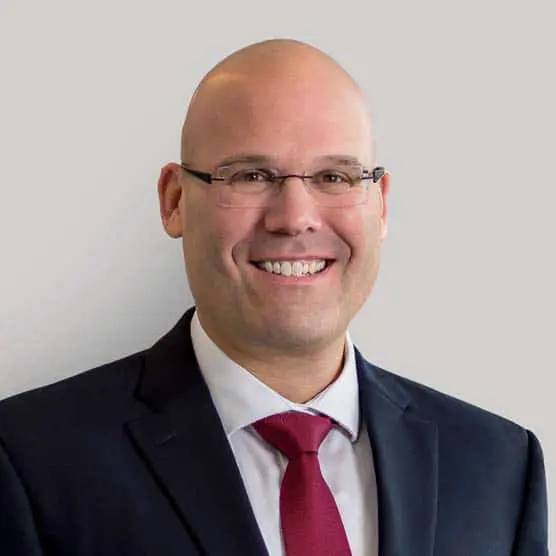Seniors housing and healthcare is a study in paradox. The fundamentals for seniors housing are favorable: inventory growth is moderating, demand is strong, and occupancy rates are rising. Nonetheless, valuations are down by up to 15%, and the flow of distressed properties to the market is increasing. The situation for skilled nursing is almost seniors housing’s mirror image. Prices have held up, supported by a shortage of beds, despite rising labor costs and sharper regulatory scrutiny.
To shed light on this situation, Beth Burnham Mace, Michael Dodge, and Scharee Lee joined me on November 14 for a Lument In Conversation webcast titled “The Paradox of Seniors Housing and Healthcare.”
Beth is a senior advisor and former chief economist and director of research and analytics at the National Investment Center for Seniors Housing & Care (NIC). Michael is vice president of finance and development at Continental Real Estate, where he manages the capital needs for existing and future development properties, including office, retail, multifamily, and senior housing. Scharee is vice president for provider relations at SanStone Health and Rehabilitation, where she works to advance skilled nursing care and create innovative ways to care for a more diverse patient population.
Here are highlights from our discussion (to watch the webcast, scroll to the bottom).
Macro View
Industry fundamentals and high-level metrics continue to improve following-the height of the pandemic. Data from NIC, noted Beth, shows that construction activity has weakened significantly. That will produce positive tailwinds in the sense that seniors housing projects under construction today will come out in a less competitive marketplace.
At the same time, challenging capital market conditions are impeding growth in the industry. “It’s expensive to refinance,” said Beth. “I think we’re going to see more distress as we move into 2024.”
Challenging financing conditions are visible in wide bid-ask spreads, in both the capital and transaction markets. Low occupancy rates, however, mean that more properties may have to be put on the market: 27% of properties have stabilized occupancy rates below 80%, according to NIC. “Those properties are really hard to continue to finance,” said Beth.
How Higher Rates Affect Operations and Construction
The impact of higher interest rates is being felt on many levels—including financing plans and business operations. In this regard, however, SanStone has been affected to a lesser degree than many of its competitors. “Rather than using interest rates to drive our business decisions, we’re focusing on the things we have more control over—such as making sure that we’re maximizing reimbursement for the care we are providing to our patients and residents,” Scharee said. Still, high rates can have ripple effects in staffing and in the quality of care, such as by adding additional economic stressors to the lives of nurses, she added.
It’s also clear that nursing operators that seek to foster a high-quality community and stay profitable face numerous hurdles. One solution might be greater cooperation between operators, suggested Scharee. “We’re seeing an increased willingness to join provider-led networks, where you have more negotiating power.” And because cost and quality of care are increasingly how value is defined, it’s critical that operators fully capture reimbursement for the care they provide. “All too often money is left on the table,” explained Scharee.
The impact of higher interest rates is visible on senior housing construction as well. “It’s impacted projects that were both in development and that are finishing up,” said Mike. “We had a lot of carry reserves get eaten up by higher rates; on projects we’re exploring, it has significantly challenged our ability to get those off the ground.” Meanwhile, relief for construction—in terms of labor costs and other inputs—has been minimal. As a result, construction may not pick up significantly until the second half of 2025, predicted Mike.
Higher rates may also influence consumer psychology in ways that negatively affect seniors housing. Consumer confidence in November, as measured by the University of Michigan, fell to its lowest level in a year, noted Beth. “That’s important for our industry because consumer feelings about what’s going on can dramatically influence whether a person makes the decision to move into seniors housing.”
The seniors housing market is sending mixed signals in other ways, observed the panelists. On the positive side, demand has largely recovered from the height of the pandemic. The availability of COVID vaccines and other treatments has eased fears about communal living—a development partly reflected in the steady rise in occupancy rates since their trough in late 2021, when rates plunged by nine percentage points from their pre-pandemic peak. “Rates have since improved by about seven percentage points,” said Beth. On the negative side, it will be hard to return to pre-pandemic occupancy rates so long as new housing continues to come on the market and other projects remain in the pipeline.
Get Creative
Another theme from our conversation centered around the fact that the nature of conventional financing has changed over the past several years. Notably, the amount of debt that investors can take on is significantly lower today. It may therefore be worth pursuing alternative financing sources or different ways of building the capital stack, especially with the help of government incentives, said Mike.
Continental Real Estate, for example, has explored property assessed clean energy (PACE) financing to support projects (PACE financing is now available in many states). Continental is also using tax increment financing on another project. Tax abatements are yet another potential avenue to explore. And funding from the American Rescue Plan Act is still available in certain communities.
As for staffing, nursing levels remain 12% below pre-pandemic levels. What can companies do to close the gap? Recruiting and retaining good employees starts with an organizational culture built on compassion and empathy, argued Scharee. “At SanStone, we don’t take a cookie-cutter approach—instead, we offer employees the flexibility and support they need to thrive in their jobs.” The company, for instance, recently hired a director of employee enrichment to assist workers in improving their credentials, such as moving from licensed practical nurse to registered nurse status.
Nursing operators must also cope with a changing regulatory environment. In September, the U.S. Department of Health and Human Services (HHS) proposed a rule that would require the country’s 1.2 million nursing-home residents to receive at least 0.55 hours of daily care from a RN, as well as 2.45 hours of daily care from a nurse aide. HHS estimates that roughly 75% of nursing homes currently don’t meet these standards.
Yet for many, the HHS rule leaves much to be desired. “Everyone in our industry knows that it [the rule] has substantial flaws,” said Scharee. In particular, the rule imposes a burdensome new mandate while neglecting the huge worker shortage in the industry. One tweak that might improve the rule, added Scharee, would be to base minimum-staffing requirements on acuity: “The patients that we care for don’t all require the same level of care.”
Looking Ahead
During recessions, the yield curve—a reflection of investors’ view of risk—inverts. But, as Beth pointed out, an inverted yield curve does not always lead to recession. As inflation falls and the U.S. economy presumably continues to avoid recession, how will rates move?
The Fed’s “dot plot” currently has the fed funds rate declining to 5.1% next year, from 5.6% today. “Unlike the markets, however, I don’t think rate cuts will come in March,” predicted Beth. “Inflation expectations are getting into people’s heads. I think Jerome Powell will keep rates as high as he needs to until inflation is brought down to the 2% target.”
Despite the challenges discussed above, our panelists agreed that there are reasons for optimism in seniors housing and healthcare in 2024 and beyond. “We’re in a tough part of the cycle, but cycles do change,” said Mike. “With the ongoing ‘silver tsunami’ creating strong demand for seniors housing and nursing, the long-term tailwinds are in our favor.” Tougher financing conditions have had the unintended benefit of instilling greater discipline into Continental’s processes too, added Mike. “Before, we were too optimistic on absorption and on where labor rates were going. Now we’re benefiting from being more realistic.”
After the roundtable, panelists had time to answer several questions from the audience. Mike fielded a question about the demand for luxury senior housing. “Construction costs for high-end developments are not much more than for traditional ones. But you really must be certain that you’re in a site and area that would support the higher resident fees.”
Beth answered a question about how reduced leasing in the office market might affect senior housing in 2024. “It may be possible to convert some office space into senior housing,” she said. “In my experience, though, purpose-built construction for seniors housing is usually a much better option.” The fact that offices tend to be located in high-traffic commercial areas that seniors prefer to avoid is another deterrent for large-scale conversions, added Mike.
Scharee answered the final question of the webcast: How are nursing patient populations changing? “We’re seeing three big populations who need the most care: behavioral patients, patients with respiratory conditions, and dialysis patients.” The active-adult market, on the other hand, is smaller but ripe with growth potential, she concluded. “If you move into active-adult housing now, it’s more likely you’ll move later into traditional seniors housing because you’re more comfortable in that type of setting.”
Watch the full webcast, The Paradox of Seniors Housing and Healthcare.

